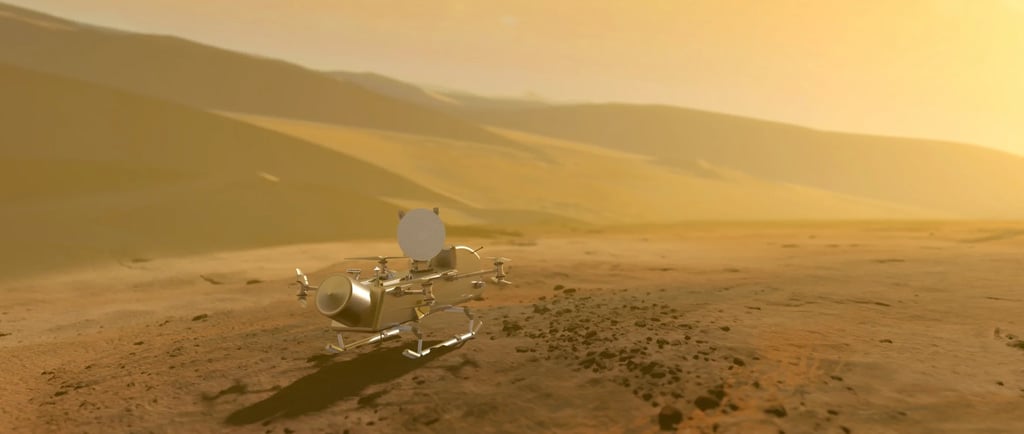NASA's Dragonfly: The Mission to Saturn's Moon


Introduction to NASA's Dragonfly Mission
The exploration of outer planets and their moons has always captivated the imagination of scientists and enthusiasts alike. NASA's Dragonfly mission, a pioneering endeavor, aims to explore Titan, Saturn’s intriguing moon. Designed as a dual-quadcopter, this innovative spacecraft is set to traverse the diverse landscapes of Titan, assessing its potential for habitability, and unlocking the secrets of its alien environment.
The Uniqueness of Titan
Titan is not just another moon in our solar system; it is a world shrouded in mystery. With a dense atmosphere primarily composed of nitrogen and evidence of surface lakes and rivers of liquid methane and ethane, Titan presents a fascinating analog to Earth’s early conditions. The Dragonfly mission will decipher the chemical processes that occur in the moon's atmosphere and surface, understanding its organic materials and assessing their implications for life.
Capabilities of the Dragonfly Quadcopter
What sets Dragonfly apart from traditional landers and rovers is its ability to fly. This dual-quadcopter design enables it to cover vast distances in a relatively short period, allowing the mission team to explore a variety of locations on Titan in ways never before possible. Dragonfly will conduct numerous flights to investigate different sites, each potentially rich in complex chemistry and geological features. This aerial perspective offers unparalleled access to Titan's diverse environments, whether they be serene lakes or rugged mountains.
The Scientific Goals of the Mission
The primary objective of the Dragonfly mission is to explore Titan and determine its habitability. Researchers are particularly interested in the prebiotic chemistry present on the moon, which could provide vital clues about how life might emerge elsewhere in the universe. Furthermore, Dragonfly will sample the surface materials and analyze them for organic compounds, deepening our understanding of the cosmic processes that govern planetary habitability.
Conclusion: The Future of Space Exploration
The Dragonfly mission epitomizes the future of space exploration, combining innovative technology with extensive scientific inquiry. By sending a dual-quadcopter to Titan, NASA is not only testing the limits of what is feasible in space exploration but also paving the way for future missions to other celestial bodies. As we prepare for this groundbreaking expedition, the scientific community eagerly anticipates the discoveries that await us on the enigmatic surfaces of Saturn’s moon.
